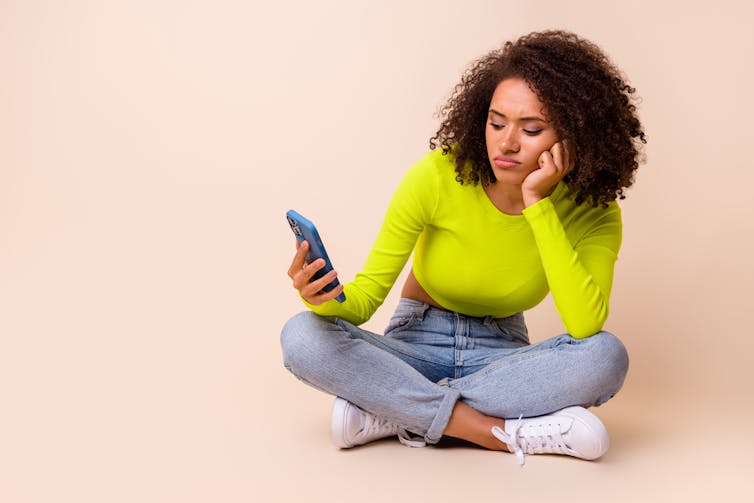Nearly three-quarters of Generation Z (people born between 1996 and 2010) follow at least one influencer on social media platforms and 44% buy things based on influencers’ recommendations.
This age group is estimated to comprise as much as 30% of the global population, so marketers sit up and take notice when influencers become popular among this age group. Having a popular influencer talk about your product on social media can make your brand go viral.
Companies understand this and many are prepared to rejig their marketing plans to collaborate with influencers to boost brand awareness and sales. But it’s reasonable to be suspicious of such collaborations.
Some research shows 45% of marketers want to control the content and aesthetics of this type of influencer post. More specifically, 39% of US and UK and 55% of German marketers want complete control over the creative content of the influencers they work with, just like with other types of ad.
An unvarnished opinion
But part of the appeal of an influencer is that they are supposed to be a real-life person trying out a product and giving their natural reaction. So followers typically expect influencers to provide genuine information rather than to succumb to the control of a brand. Blatant promotion of unrealistic or unsustainable lifestyles, or the misrepresentation of facts by influencers, could result in a flood of unfollows.
Our research shows Gen Z consumers are more intolerant towards influencer campaigns perceived to be explicitly marketer-controlled versus more natural recommendations by social media personalities.
And people are more likely to “punish” social media influencers with larger follower numbers for sharing biased and fake campaigns, according to our research. Companies sponsoring the campaigns are not insulated from the ire of the followers either. We found that brands seen to be sponsoring these campaigns can suffer as a result.
Volvo’s influencer marketing campaign in collaboration with Chriselle Lim, a beauty, fashion and lifestyle influencer is a good example of this. Lim partnered with Volvo in 2015 to create a professional video highlighting that the brand is environmentally responsible and safety conscious, which was significantly different from her usual beauty content. Her followers reportedly questioned the credibility of the tie-up as a result.

Of course, some posts are clearly marked as ads for a brand. Some influencers will even sign up to be an official spokesperson for a brand. But it’s not always very clear that an influencer is a front for a corporate campaign. The UK Advertising Standards Agency (ASA) provides guidance for influencers but its research shows social media users still struggle to tell advertising content apart from non-advertising content on social media.
So how can you tell a brand-backed campaign from a real-life review?
1. Sponsorship Tags
Campaigns that are marketer-controlled are evident by sponsored tags on some platforms. Meta has “sponsorship disclosures” for its platforms, Facebook, WhatsApp and Instagram. Influencers must declare whether their campaigns are sponsored through a “paid partnership” or not. Meta says it will remove any posts that violate its rules on sponsored content.
Some influencers will also use an “in collaboration with” tag for certain campaigns to make their claims credible and authentic if a platform doesn’t have its own official tag. In a marketer-controlled campaign, the brand is often tagged multiple times, making it more of a “brand prominence” post than a typical influencer post.
Without an official sponsorship tag, an influencer could very successfully push biased views and surreptitiously promote brands’ messages for them.
2. Different types of posts
During our research, we found that brand-backed influencer posts are sometimes quite different from their regular posts. Influencers act or behave in a different way than their normal content, or the creatives of the posts – how they look and sound – are different. In such situations, a brand becomes the hero of the post rather than the influencer.
Taking this too far can make it very apparent to followers that the influencer is trying to push the agenda of the brand rather than giving their actual opinion on a product. Such unnatural partnerships put the authenticity and credibility of the influencer at stake.
Rachel Arons, a Gen Z influencer, explains how online personalities remain authentic when she says: “We go on camera and speak like we’re on Facetime with a friend, which is probably less cringe” than a edited brand campaign.
Making posts more transparent
To keep their followers happy and engaged, most influencers need to remain real and give their unbiased opinions. They should always make it clear when they are partnering for a campaign or risk losing followers – not to mention customers for the brand. Voluntarily disclosing partnerships could even help build brand credibility.
In fact, brands should partner with influencers to come up with interesting and realistic product depictions instead of just trying to push their own message. Advertising standards should also be more consistent, bringing all platforms accessed by consumers under similar rules – perhaps even those used for advertising and promotions in print and TV ads.
Followers trust these influencers and engage with them and this trust should be protected.

